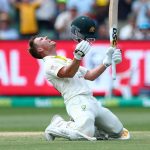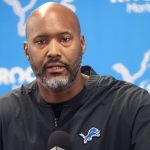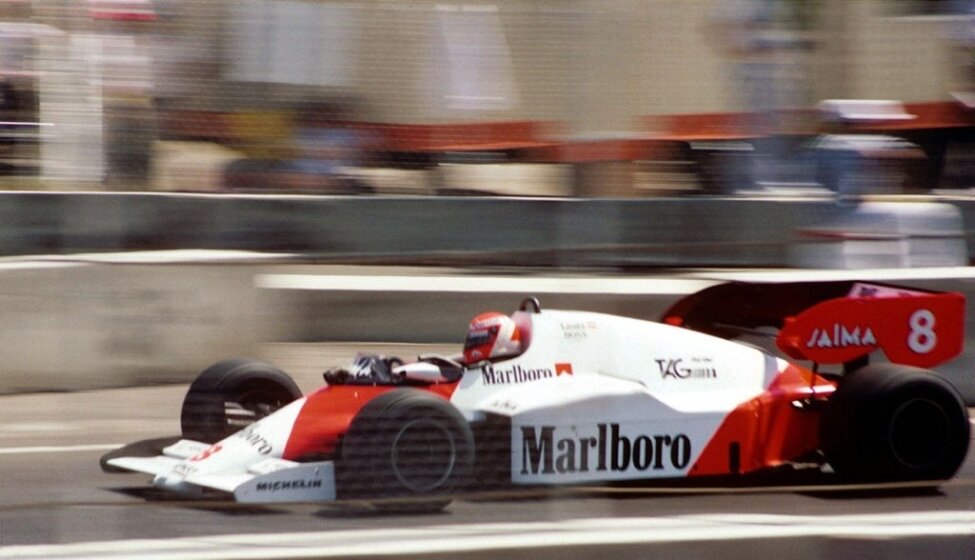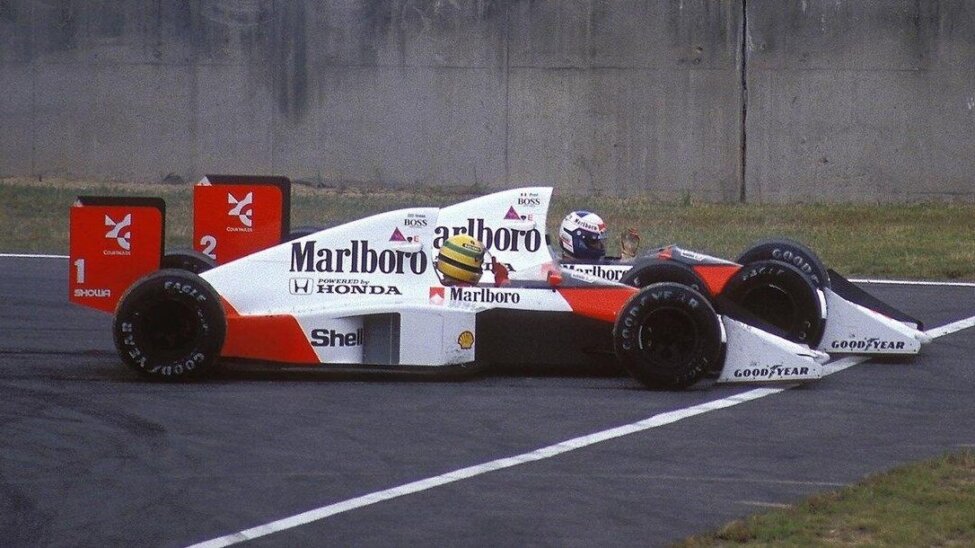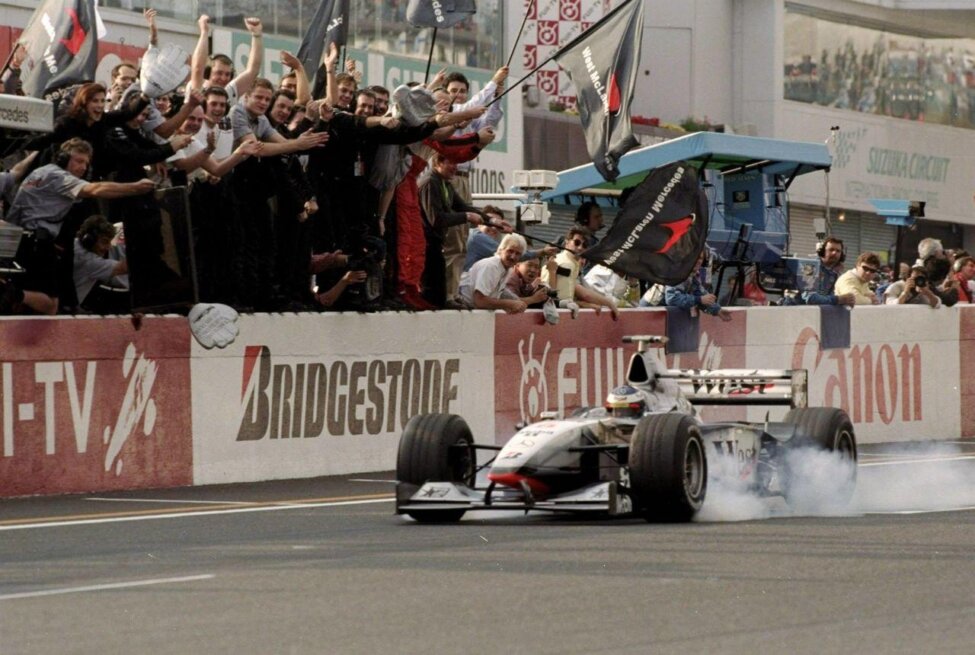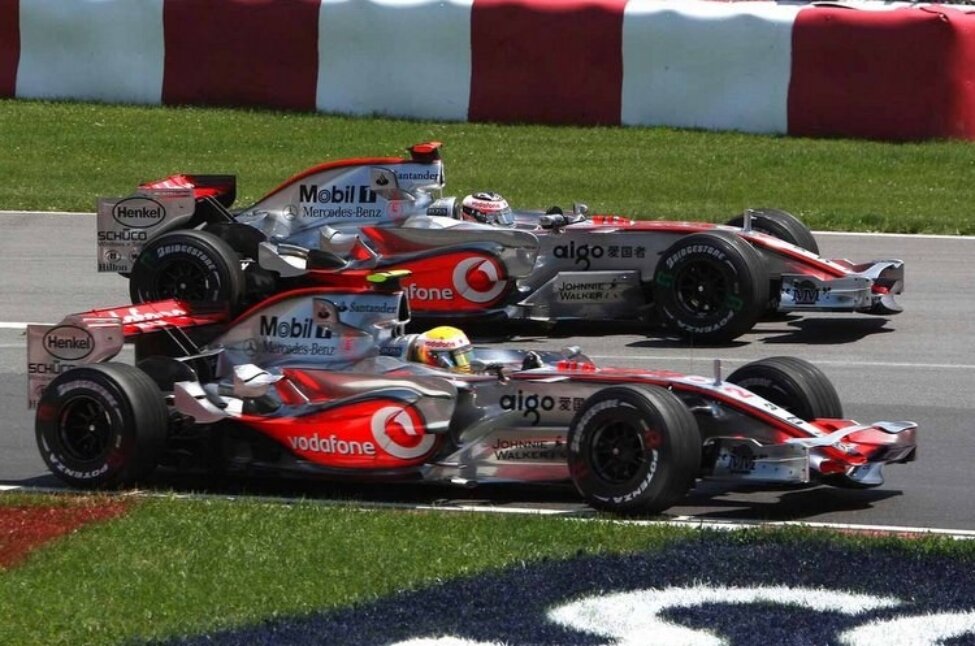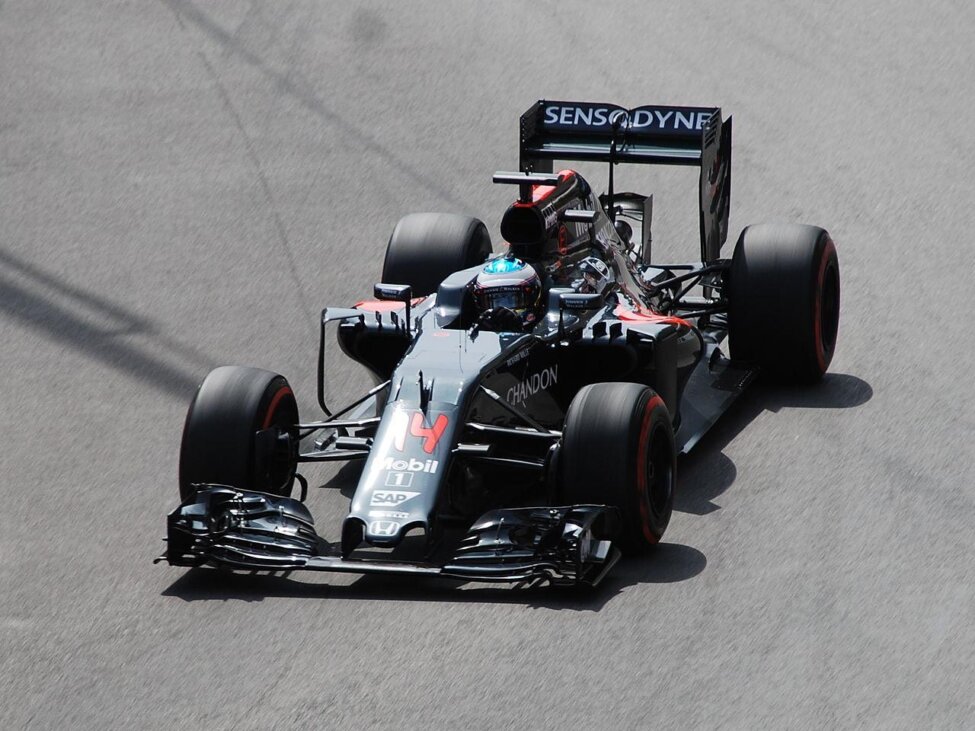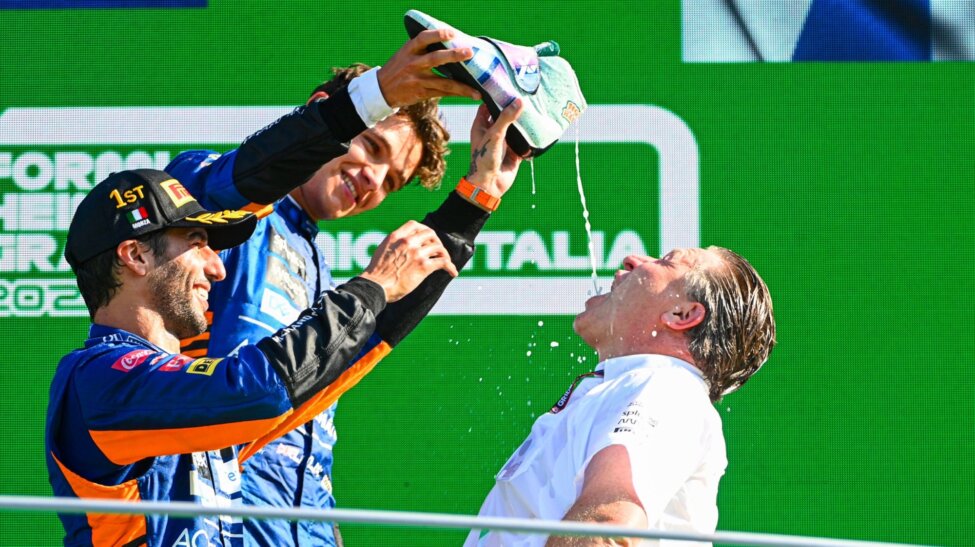McLaren – Latest F1 news about the McLaren F1 team
After losing out on third to Ferrari in the 2021 Constructors’ Championship, McLaren will be hoping to regain momentum in 2022, with the team fielding an unchanged driver line-up of Lando Norris and Daniel Ricciardo.
Origins
Bruce McLaren Motor Racing was founded in 1963 by New Zealander Bruce McLaren. Having raced for Cooper in Formula 1, winning three races and finishing second in the 1960 championship, Bruce wanted to compete in the Tasman Series and approached his employers. However, following a disagreement over the type of engine to use, he decided to set up his own squad for himself and teammate Timmy Mayer to run in.
While Bruce won the 1964 Tasman Series, Mayer was killed during practice for the final race. Bruce drove for his team in sports race cars while still driving for Cooper in F1. Following the outfit’s dip in form, though, he decided in race his own cars in 1966.
Early days in Formula 1
The team made their Grand Prix debut at the 1966 race in Monaco, making them the second oldest current Formula 1 team after Ferrari. Unfortunately, the debut lasted just nine laps, as McLaren retired with an oil leak. The outfit scored their first points at the British Grand Prix, but the team struggled due to unreliable and underpowered engines.
McLaren switched to British Racing Motors V12 engines in 1967, but delays forced the team to initially use a modified Formula 2 car called the M4B before creating a slightly larger car, the M5A. Their best result was a fourth in Monaco.
After driving McLaren’s sole entry up until that point, 1968 saw Bruce joined by 1967 champion Denny Hulme, who raced for the team in Can-Am. Now powered by Cosworth, the team experienced an upswing in form and won their first Grand Prix in Belgium thanks to Bruce. Hulme won races in Italy and Canada later in the year, with McLaren finishing the season second in the Constructors’ Championship. The squad would win their next race the following year in Mexico.
The 1970 season saw Hulme and Bruce both finish second at the opening two Grands Prix before tragedy hit. Bruce was killed in a crash while testing the new M8D Can-Am car at Goodwood, with Teddy Mayer taking over control of the team. Hulme continued on with Dan Gurney, though the latter was replaced by Peter Gethin mid-season.
No wins came in 1971, though Hulme ended a run of two-and-a-half years without victory at the 1972 South African Grand Prix, and McLaren finished the season third in the Constructors’ Championship. The McLaren M23 was the team’s new car for the 1973 season and was used for the next four years, with the squad once again finishing third.
Fittipaldi leads McLaren to glory and Hunt follows soon after
Emerson Fittipaldi joined the team in 1974, two years after winning the title with Lotus. Hulme, in what was his final F1 season, won the season-opener in Argentina. However, it was the Brazilian who took the title, beating Ferrari’s Clay Regazzoni by four points after finishing fourth at the season-ending United States Grand Prix. Fittipaldi, Hulme and multiple motorcycle World Champion Mike Hailwood helped McLaren to win their first Constructors’ Championship.
There was no repeat in 1975 as Fittipaldi had to settle for second behind Niki Lauda. The Brazilian left McLaren for his brother’s team soon after, and as a result Mayer turned to James Hunt as his replacement.
The British driver trailed Lauda by 30 points midway through the 1976 season, despite wins in Spain and France. However, Lauda crashed and was nearly killed at the German Grand Prix. Whilst he only missed two races, Hunt quickly caught him in the standings.
Hunt won four more races and trailed by three points heading into the season finale in Japan. Heavy rain pushed Lauda to retire due to safety concerns, allowing the Briton to take the championship following a third-place finish, though Ferrari beat McLaren to the Constructors’ title.
The M23 was gradually replaced by the M26 in 1977, with the car making its final appearance in Gilles Villeneuve‘s F1 debut and lone race for McLaren at the British Grand Prix. While Hunt managed to win three races that year, results worsened from there, with the Briton dropped in favour of Lotus’ Ronnie Peterson. Tragically, the Swede was killed in a crash at the Italian Grand Prix, and as a result John Watson was signed to the team.
Slow start to the 1980s
Alain Prost took over from Patrick Tambay to start the 1980s. However, both he and Watson rarely scored points. Under pressure from principal sponsor Philip Morris and their executive John Hogan, Mayer merged McLaren with Ron Dennis’ Project Four Formula 2 team, who were also sponsored by the tobacco company.
Dennis and designer John Barnard had plans for an innovative F1 chassis made from carbon-fibre rather than aluminum alloy. With help from investors that came via the merger, the McLaren MP4 of 1981 was created, driven by Watson and Andrea de Cesaris.
Soon after, McLaren moved from Colnbrook to Woking. While Dennis and Mayer initially shared managing directorship of the company, by 1982 Mayer had left, and Tyler Alexander and his shareholdings had been bought by the new owners as well.
TAG-Porsche and Honda engines
In need of a turbo engine of their own to match the likes of Renault, Ferrari and Brabham, Dennis convinced Williams backer Techniques d’Avant Garde (TAG) to fund Porsche-built, TAG-branded turbo engines made to Barnard’s specifications. TAG founder Mansour Ojjeh would later become a McLaren shareholder.
In the meantime, the team continued with Cosworth engines, with Lauda joining after coming out of retirement in 1982. Wins followed but there was no real sustained success, yet that all changed in 1984.
Prost rejoined McLaren after being fired by Renault and, now with TAG engines, the team dominated. The Frenchman and Lauda took a combined 12 wins and two-and-a-half-times more points than nearest rivals Ferrari.
Lauda won the title by just half a point, the narrowest margin ever in F1 history. McLaren’s dominance continued into the following year, as they once again took the Constructors’ Championship while Prost won his first Drivers’ title, winning five races and finishing ahead of Ferrari’s Michele Alboreto.
Williams and McLaren battled it out in 1986, with Keke Rosberg stepping in for Lauda after the Austrian brought a definitive end to his career. Williams were resurgent with their Honda engines and took the Constructors’ Championship thanks to the performance of Nigel Mansell and Nelson Piquet.
However, with both of their drivers in the hunt for the Drivers’ Championship, each took points off the other, while Prost was largely on his own as Rosberg failed to come to terms with his new car. Mansell, Piquet and Prost headed into the season-ending Australian Grand Prix with a chance at the title, but a puncture for Mansell and a precautionary stop for Piquet opened the door for Prost.
The Frenchman took the win as well as his second title, making him the first driver to win back-to-back championships since Jack Brabham in 1959 and 1960.
McLaren teams up with Honda
While the 1987 season saw McLaren unable to challenge Williams-Honda, things changed in 1988. McLaren teamed up with the Japanese engine supplier and, encouraged by Prost, Dennis signed Ayrton Senna to partner the Frenchman.
The campaign was dominated by the Woking outfit, with McLaren winning 15 of the 16 races. The lone failure came at Monza, when Senna had been leading comfortably only to collide with back marker Jean-Louis Schlesser, handing the win to Ferrari’s Gerhard Berger.
Although McLaren enjoyed unprecedented success in 1988, the relationship between Senna and Prost began to turn sour at the Portuguese Grand Prix. The Brazilian squeezed Prost against the pit wall and, although the Frenchman took victory, he was less than pleased with his teammate. In the end Prost scored more points than Senna that season, yet the Brazilian took his first Drivers’ Championship given that only the best 11 results counted at this time.
The success continued in 1989 as McLaren took both titles thanks to the MP4/5. Relations between Senna and Prost continued to worsen, though. At the San Marino Grand Prix, Prost felt that Senna went back on an agreement not to pass each other at Turn 1. This, and his belief that Honda and Dennis were favouring Senna, resulted in Prost announcing he would be leaving for Ferrari at the end of the season.
The battle between the two for the Drivers’ Championship was decided at the Japanese Grand Prix. With Senna needing to win, the two came together in the closing laps of the race. Prost was forced to retire, but Senna rejoined the track after a push start and took the chequered flag. Unfortunately for the Brazilian, he was later disqualified after he was deemed to have rejoined the circuit incorrectly, thereby handing Prost his third title.
Prost and Ferrari pushed McLaren hard in 1990, with the championship once again decided in Japan. This time Senna and Prost collided at the first corner, with the Brazilian admitting in the following year that the incident had been deliberate because his rival had been able to start on the clean side of the grid. As a result, Senna took his second title whilst McLaren claimed the Constructors’ Championship.
The 1991 season saw Senna win his third and final title, finishing 24 points ahead of Williams’ Nigel Mansell, while Prost was dismissed from Ferrari before the campaign was over after criticising the team. Meanwhile, the Williams-Renault partnership continued their ascent in 1992, with Mansell winning the world title over teammate Riccardo Patrese, while McLaren ended the year with five wins.
Honda withdrawal and dip in form
Honda opted to leave F1 at the end of the 1992 season in order to enter the CART PPG Indy Car World Series, forcing McLaren to find a new engine supplier. While the team initially had a deal with Renault, the move fell through and McLaren switched to customer Ford engines.
Senna won five races that year but teammate Michael Andretti struggled, scoring just seven points before being replaced by test driver Mika Hakkinen. With Williams taking both titles and remaining a class above the rest of the grid, Senna opted to join them for the 1994 season.
McLaren tested a Lamborghini V12 engine prior to the start of the 1994 campaign, but ultimately decided to use Peugeot engines. The pairing of Hakkinen and Martin Brundle finished on the podium eight times, but failed to take a win. As a result, McLaren dropped Peugeot at the end of the season due to several failures that cost the team potential victories, and instead switched to Mercedes-Benz-branded Ilmor-designed power units.
Return to glory with Mercedes power
The 1995 season started off with Mansell replacing Martin Brundle. However, after just two races in a challenging car, Mansell decided to walk away from F1. Mark Blundell took his place, with McLaren far away from the front runners all year.
David Coulthard joined the team in 1996 and, with Williams still dominant, McLaren went a third consecutive season without a win. That streak ended at the opening race in 1997, with Coulthard taking the chequered flag. The Scotsman and Hakkinen would each win another Grand Prix before the end of the campaign, while Adrian Newey joined the team from Williams in August that year.
The addition of Newey, as well as Williams losing their Renault engines, saw a shift at the front in 1998, as McLaren battled it out with Michael Schumacher and Ferrari for the title. McLaren won five of the opening six races, but Hakkinen found himself level on points with the German with two races to go. In the end, the Finn won the Luxembourg and Japanese Grands Prix to take the Drivers’ Championship, while McLaren clinched the Constructors’ Championship.
Hakkinen added a second title the following year, beating the other Ferrari driver Eddie Irvine after Schumacher’s title bid ended following an accident in which he broke his leg at the British Grand Prix. McLaren were unable to retain the Constructors’ crown, though, due to a series of driver errors and mechanical failures.
Ferrari rise while McLaren fall back
McLaren won seven races in 2000, but in the end it wasn’t enough to prevent Ferrari and Schumacher from taking both titles. The 2001 season saw Coulthard outscore Hakkinen for the first time since 1997, with the Finn retiring at the end of the year. He was replaced by compatriot Kimi Raikkonen. McLaren’s only victory in 2002 came thanks to Coulthard’s win in Monaco, as Ferrari matched their 1988 feat of 15 wins.
The 2003 season started strongly for McLaren, with Coulthard and Raikkonen taking wins at the opening two races. However, the MP4-18 suffered with crash test and reliability issues. As a result, the team were forced to continue using the ‘D’ development of the old MP4-17 for longer than planned. Despite the issues, Raikkonen battled it out with Schumacher for the title, eventually losing out by just two points.
Although the team started 2004 with the MP4-19, it was replaced by the MP4-19B mid-season. Raikkonen scored McLaren’s only win in Belgium, and they finished the year fifth in the Constructors’ Championship, their worst result since 1983.
Coulthard left for Red Bull and was replaced by Juan Pablo Montoya in 2005. McLaren finished the campaign with 10 wins, but early season issues with heating their tyres properly, as well as the unreliability of the MP4-20, cost Raikkonen several race results and grid positions in qualifying. This helped Renault and Fernando Alonso to take the Constructors’ and Drivers’ Championships.
The 2006 season was less successful, with McLaren failing to register a win for the first time in a decade. Montoya left for NASCAR after crashing with Raikkonen at the United States Grand Prix, with test driver Pedro de la Rosa filling in for the rest of the campaign. It wasn’t the only departure affecting the squad either, as Raikkonen switched to Ferrari at the end of the year.
Hamilton and Alonso era ends almost immediately
McLaren brought in two-time F1 champion Alonso alongside rookie Lewis Hamilton in 2007, with both drivers quickly experiencing success on track. Each won four races and led the Drivers’ Championship for most of the year. However, the relationship between the two began to deteriorate, with an incident at the Hungarian Grand Prix only adding to the problems.
Alonso was judged to have deliberately impeded Hamilton during a pit-stop in qualifying. As a result, the Spaniard was handed a five-position grid penalty, while McLaren were told that they would not score any Constructors’ points or be handed a trophy should one of their drivers win, with the FIA stating that the team’s explanation for why Alonso remained stationary in the pits for so long was “not accepted”.
The squad had initially planned to appeal the decision, but ultimately withdrew it due to the Spygate scandal that rocked the team.
McLaren were investigated for being in possession of proprietary blueprints of the Ferrari car. Although the team denied knowledge of the matter and blamed it on a rogue engineer early on, they were eventually found guilty, excluded from the Constructors’ Championship and fined $100 million.
Hamilton and Alonso were both allowed to continue racing without penalty, with the Briton heading into the final race of the season four points up on his teammate and seven points ahead of Ferrari’s Raikkonen. In the end, Raikkonen won in Brazil and took the Drivers’ Championship by a single point.
The inter-team issues that arose during the season resulted in Alonso leaving McLaren at the end of the campaign, whilst Heikki Kovalainen was brought in as his replacement.
Hamilton leaves it late
The 2008 season saw Hamilton battle it out with the Ferrari duo of Raikkonen and Felipe Massa. Just like in the previous campaign, the Briton headed into the final race of the season in Brazil at the top of the standings.
Massa took the win, and initially it looked like it would be enough to claim the title as well. However, Hamilton clinched the championship by passing Timo Glock on the final corner of the final lap, finishing the race in fifth. With Kovalainen only able to finish seventh in the overall standings, though, the Constructors’ Championship went to Ferrari.
Dennis stepped down as CEO before the start of the 2009 season, with Martin Whitmarsh taking over. The MP4-24 proved to be off the pace, though Hamilton managed to win races later in the season in Hungary and Singapore. Nevertheless, the Briton could only manage a fifth-place finish in the standings, with Kovalainen down in 12th. As a result, the team brought in that year’s World Champion, Jenson Button, to replace the Finn in 2010.
Red Bull proved too strong to beat in 2010, though Button and Hamilton finished the campaign with five victories between them. They increased their tally to six during the following year, with Button finishing the championship second behind Sebastian Vettel.
Button won the opening race in 2012, whilst Hamilton took the chequered flag in Canada. By the mid-way point of the season, though, McLaren were well behind Red Bull and Ferrari in the championship. Hamilton led in Singapore and Abu Dhabi, but was forced to retire due to reliability problems. At the end of the year, the Briton left for Mercedes, with Sergio Perez stepping in to replace him.
McLaren failed to finish on the podium in 2013, the first time they had not achieved this since 1980. Kevin Magnussen joined the team in Perez’s place for 2014, while Dennis returned as CEO. The team’s best result was a second-place finish in Australia.
Return of Honda engines
McLaren ended their engine deal with Mercedes in 2015, buying back the 40 percent stake the German manufacturer had in the team as well, and instead returned to Honda power. Alonso was brought back to partner Button, but the season started poorly for the Spaniard after he suffered a concussion during pre-season testing in Spain.
As a result he missed the season-opener in Australia, with reserve driver Magnussen stepping in for him. McLaren’s poor pace saw Button finish two laps down in 11th and, while the Honda engine appeared to make some gains later in the season, the team finished down in ninth in the Constructors’ Championship with 27 points, their worst performance since 1980.
Both drivers and Honda returned for 2016, but once again Alonso’s campaign started off on the wrong foot as he was involved in a huge collision with Esteban Gutierrez in Australia. While the team performed better than in the previous season, McLaren ended the year sixth in the standings with 76 points.
Button opted to retire, and Stoffel Vandoorne replaced him for 2017. Ron Dennis had also been ousted from the team, and Zak Brown became CEO. This proved to be another challenging year on-track for McLaren, though, as the squad slumped to a ninth-place finish in the Constructors’ Championship with only 30 points.
Switch to Renault power
During the 2017 Singapore Grand Prix weekend, McLaren announced that they would split from Honda and bring in Renault engines for the next three years.
The partnership proved to be a step forward after the team’s Racing Director, Eric Boullier, described their performance with Honda as a “proper disaster”. Nevertheless, Alonso announced he would not be returning for the 2019 Formula 1 season, while McLaren finished the 2018 campaign sixth with 62 points.
Lando Norris and Carlos Sainz were named as the driver line-up for 2019, and the team soon established themselves as a consistent presence on the grid behind Mercedes, Ferrari and Red Bull. The Spaniard brought home McLaren’s first podium since the 2014 Australian Grand Prix after finishing fourth in Brazil, though he was promoted to third following Hamilton’s post-race penalty. At the end of the season McLaren finished fourth with 145 points, their best result since 2014.
Two more podiums followed in 2020, as Norris finished third in Austria and Sainz came home second in Italy. That helped McLaren to an impressive third place in the Constructors’ standings behind Mercedes and Red Bull, but ahead of Ferrari.
Mercedes power and battle with Ferrari
Despite an upturn in fortunes with Renault power, McLaren announced they would be resuming their relationship with Mercedes in 2021. Norris remained with the team, whilst Sainz left to join Ferrari, with Daniel Ricciardo replacing him after making the move from Renault.
Both drivers scored points at the opening event in Bahrain, whilst Norris took the first of his four podium finishes throughout the year at the Emilia Romagna Grand Prix.
It proved to be a strong start to the campaign for Norris, who at one stage held third place in the World Championship standings behind title contenders Max Verstappen and Lewis Hamilton. Ricciardo, however, faced some struggles to adapting to his new car, and did not manage to match the performance of his teammate.
This seemed to change at the Italian Grand Prix in September. Ricciardo performed strongly in Saturday’s Sprint race, and as a result lined up second on the grid for Sunday’s main event. The Australian continued his impressive form and took a surprise victory. With Norris finishing in second, this marked McLaren’s first 1-2 result since 2010.
At the next race in Russia, the team again looked promising and Norris claimed his first pole position in F1. The Briton looked to be on course to follow this up with a debut win in the Grand Prix, but ran into trouble when rain fell during the final laps.
Norris made the decision to stay out on track rather than pit for Intermediate tyres, and this proved to be the wrong call. The McLaren driver slipped down the order and eventually finished in P7. He admitted later that he was “devastated” to lose out on what would have been his first victory in Formula 1.
The remainder of the year proved slightly more challenging for the team, with rivals Ferrari getting ahead of them in the battle for P3 in the Constructors’ Championship. It was the Scuderia who secured this by the end of the season, beating McLaren by 48.5 points.
Aiming to fight back in 2022
After slipping down to fourth in the 2021 season, McLaren will be keen to work their way back up the standings again in 2022. Norris and Ricciardo both remain with the team, having each signed a multi-year contract.
However, with new technical regulations being introduced into the sport, there is some uncertainty about how this might affect the pecking order. Norris admits that he’s curious to see how the drivers will adapt to the new cars.
Meanwhile, Ricciardo is hoping to make “another step” in 2022 as he continues to work on improving his performance in the McLaren.



